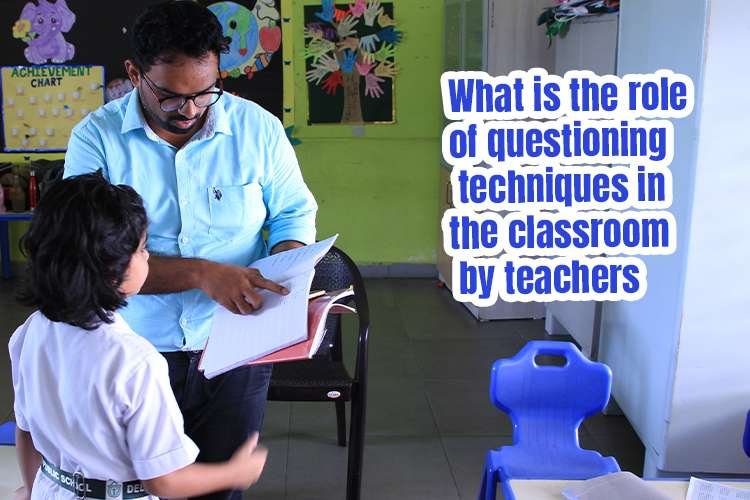In the ever-evolving landscape of education, the role of teachers extends far beyond imparting knowledge. They are facilitators of learning, responsible for engaging and inspiring their students. One powerful tool in a teacher’s arsenal is the art of inquiry.
Teachers use effective questioning techniques to nurture curiosity, critical thinking, and student engagement. These methods encourage active participation, ignite curiosity, and promote collaboration and reflection, ultimately deepening understanding.
What are querying techniques?
Investigating techniques refer to a deliberate and skillful approach used by teachers to pose thoughtful queries to students in order to stimulate thinking, promote engagement, and facilitate meaningful learning experiences. These techniques involve the art of asking strategic enquiries that encourage students to analyze, evaluate, and synthesize information, fostering critical thinking and higher-order cognitive skills.
Probing delves deeper into students’ thinking processes, encouraging them to provide more detailed explanations or evidence to support their answers. Socratic inquiry., inspired by the method used by the ancient Greek philosopher Socrates, involves a series of guided doubts that challenge students’ assumptions, encourage critical thinking, and lead to deeper understanding.
By employing investigating techniques effectively, teachers can actively involve students in the learning process, promote active thinking, encourage participation, and enhance comprehension. These techniques not only support academic growth but also foster essential skills such as problem-solving, communication, and metacognition, empowering students to become independent and lifelong learners.
How do interrogative techniques enhance learning?
Inquiry techniques act as catalysts for critical thinking, encouraging students to actively process information and make meaningful connections. By utilizing effective inquiry. strategies, teachers can:
1. Foster inquiry and curiosity:
Through provoking doubts, teachers can stimulate curiosity in students, prompting them to explore new ideas, seek answers, and develop a thirst for knowledge. Open-ended sentences, such as “What if?” or “Why do you think?” encourage students to analyze and think creatively.
2. Promote reflection and self-assessment:
Self practicing requires students to reflect on their learning experiences and assess their understanding enabling them to take ownership of their progress. For instance, asking, “What strategies did you use to solve this problem?” encourages metacognition and helps students become aware of their own learning processes.
3. Encourage active participation:
Well-crafted interaction practises serve as an invitation for students to actively participate in classroom discussions. By providing opportunities for students to express their thoughts and opinions, teachers can create an inclusive learning environment that values diverse perspectives.
When to employ investigating techniques?
Effective problem solving techniques can be employed throughout various stages of a lesson to optimize learning opportunities. Knowing when to employ inquiry techniques is crucial for optimizing student engagement and learning. By strategically incorporating queries throughout a lesson, teachers can assess understanding and promote required discussions. , Here are some key instances where examining can be particularly beneficial:
1. Introduction and hook:
At the beginning of a lesson, posing provoking questions can capture students’ attention and activate their prior knowledge. This sets the stage for the lesson, igniting curiosity and establishing relevance.
2. Checking for understanding:
Intermittently asking topic issues during a lesson allows teachers to gauge student comprehension. By utilizing both closed-ended and open-ended conversational classes, educators can assess whether students have grasped key concepts or if further clarification is needed.
3. Promoting discussion and collaboration:
Effective communication can be used to spark collaborative discussions among students. By posing inquiries that require students to share their ideas and engage in dialogue, teachers encourage active participation, peer learning, and the development of communication skills.
Where do the examining abilities thrive?
Effective doubt solving techniques are versatile and can be employed across various educational settings. These abilities thrive in various educational settings, creating opportunities for student engagement and deeper understanding. Diverse contexts where querying abilities flourish, driving meaningful educational interactions and promoting student growth are mentioned below:
1. Whole-class instruction:
In a traditional classroom setting, whole-class examining can promote active participation and create a dynamic learning atmosphere. Teachers can encourage students to build on each other’s responses, facilitating a collaborative learning experience.
2. Small group discussions:
During group work or collaborative activities, teachers can employ examining techniques to facilitate meaningful discussions among smaller groups of students. By asking targeted topic queries, teachers can encourage deeper analysis, promote effective communication, and enhance problem-solving skills within the group dynamic.
3. One-on-one interactions:
In individual conferences or tutoring sessions, examining techniques can be used to personalize instruction and address specific student needs. Through focused and probing practises, teachers can delve into students’ understanding, identify areas of confusion, and provide tailored guidance and support.
4. Online learning environments:
In the era of virtual and hybrid learning, examining techniques remain valuable tools for engaging students remotely. Through discussion forums, video conferencing platforms, or even asynchronous platforms, teachers can pose topic inquiries that foster critical thinking, collaboration, and active participation, even in digital spaces.
The role of querying techniques in the classroom is paramount in creating a dynamic and engaging learning environment. Through the power of thoughtful and purposeful querying, teachers empower their students to become active learners, developing essential skills for success in an ever-changing world.
As teachers embrace the art of querying, they unlock the potential for transformative learning experiences, enabling students to explore, reflect, and construct knowledge. By using effective strategies, educators nurture a culture of inquiry, curiosity, and lifelong learning within their classrooms. The impact of skilled querying techniques reaches far beyond the walls of the classroom, shaping the minds and futures of the students they serve.
Let us all encourage students to question, to wonder, and to embark on the journey of learning with curiosity and enthusiasm. Together, we can unlock the doors to a world of knowledge and inspire a new generation of lifelong learners. Remember, it is through the art of querying that we ignite the flame of curiosity and pave the way for a brighter future.


